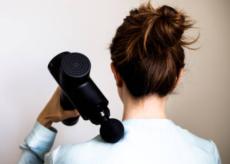Breast Pump for Small Breasts: Challenges Faced while Using
Using a breast pump can trigger the milk letdown reflex in women with small breasts by creating a vacuum that expresses milk into a collection container. Nonetheless, these women may encounter certain difficulties or variations in the pumping procedure.
Problems faced when using breast pump by women with small breast
Although women with small breasts can use breast pumps, they may encounter some potential challenges or issues while using them.
Some of the difficulties faced are:
- Difficulty fitting the breast shield properly: Breast shields are available in different sizes, but women with small breasts may encounter difficulties in finding the right fit. Wearing a shield that is too big can cause discomfort and lower milk production, while one that is too small may not extract enough milk, leading to frustration and incomplete breast emptying.
- Reduced milk output: Producing enough milk can be a challenge for women with smaller breasts. Nevertheless, it’s worth noting that breast size doesn’t always correspond to milk production. Many women with small breasts can breastfeed and pump milk effectively.
- Discomfort or pain: Using a breast pump may cause discomfort or pain for some women because of the suction and pressure on their breast tissue. This could be worsened if the breast shield is ill-fitted or if the suction level is too intense.
- Time-consuming pumping sessions: Because the breast has a smaller surface area, it may take a longer time to fully empty it, resulting in longer and more time-consuming pumping sessions. This can pose a particular challenge for busy or working mothers, who may need to pump more frequently to sustain milk production.
Although there may be some obstacles, women with smaller breasts can still use a breast pump effectively and produce sufficient milk for their baby. It is crucial to select the appropriate breast shield size and regulate the suction level to a comfortable level to optimize milk production and minimize any discomfort. Seeking guidance from a lactation consultant or healthcare provider can also offer additional assistance and advice for women using a breast pump with smaller breasts.

Nilam is the owner and writer of EverydayCares.com. She is an experienced pharmaceutical professional and believes that many of the health problems can be cured naturally at home. She enjoys reading scholarly medical journals and gets inspiration to write up-to-date practical information and resources and makes sure all of the articles are of the highest quality. The best way to reach her is via [email protected]
Medical Disclaimer:
The contents on everydaycares.com, such as text, graphics, images, and other materials care for informational purposes only. The content is not intended to be a substitute for professional medical advice, diagnosis, or treatment. Always seek the advice of your physician or other qualified health provider with any questions you may have regarding a medical condition. Never disregard professional medical advice or delay in seeking it because of something you have read on this website! Use of any information contained in this website is at the sole choice and risk of the reader.



